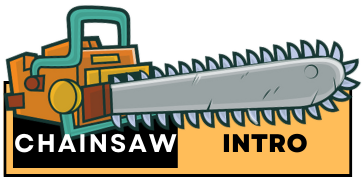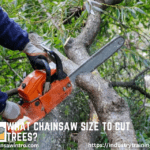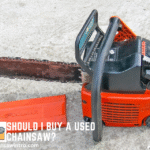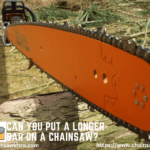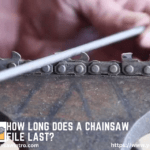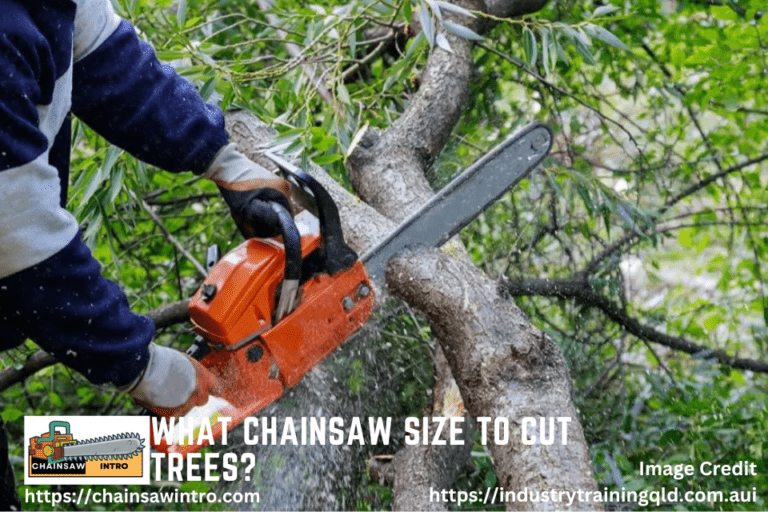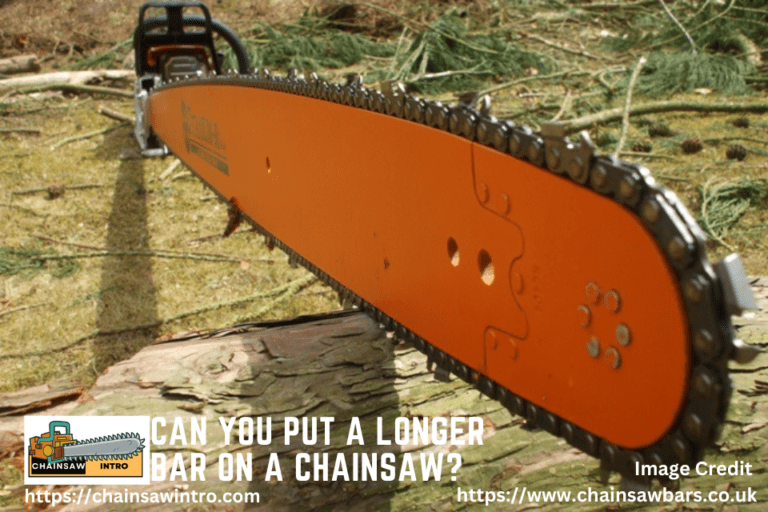When it comes to keeping trees and shrubs under control, a pole saw is one of the most practical tools you can own. Designed to extend your reach, a pole saw combines the cutting ability of a small chainsaw with the length of an extendable pole. But with so many gardening and landscaping tools available, many people ask: “Is a pole saw worth it?” The answer depends on your yard size, the type of work you do, and how often you maintain your trees.
In this guide, we’ll explore what pole saws are, their benefits and drawbacks, and whether buying one is a smart investment for you.
What Is a Pole Saw?
A pole saw is a specialized tool with a chainsaw-like cutting head mounted on a long pole, designed for trimming branches up to 15-20 feet high without climbing. Available in gas, electric, battery-powered, and manual models, pole saws range from 6 to 12 feet in length (extendable to 20 feet with telescoping poles)
Brands like Stihl, DeWalt, Greenworks, and Sun Joe offer models for tasks like pruning, shaping trees, or clearing storm debris. They are available in different types:
- Manual pole saws – Lightweight, affordable, and good for light pruning.
- Electric corded pole saws – Ideal for small yards where a power outlet is accessible.
- Battery-powered pole saws – Offer portability and ease of use without cords.
- Gas-powered pole saws – Best for heavy-duty pruning and professional use.
This versatility makes pole saws an excellent tool for tree maintenance.
Best “Pole Saw” Chainsaw? EGO vs Milwaukee, Oregon, DeWalt, Ryobi, Worx, Craftsman, Sun Joe
Benefits of Using a Pole Saw
So, why should you consider adding a pole saw to your toolkit? Here are the key benefits:
1. Extended Reach Without a Ladder
One of the biggest advantages of a pole saw is that it allows you to reach 10–15 feet or more without climbing a ladder. This makes trimming branches much safer and more efficient.
2. Improves Tree Health and Appearance
By regularly pruning dead or overgrown branches, you can boost tree health, encourage growth, and improve your yard’s appearance. A pole saw makes this process quick and easy.
3. Saves Time and Effort
Compared to manual pruning saws or climbing, a pole saw allows you to cut through thick branches in minutes rather than hours.
4. Cost-Effective in the Long Run
Hiring a tree service for pruning can be expensive. Owning a pole saw means you can handle many jobs yourself, saving hundreds of dollars annually.
5. Versatile Use
Pole saws aren’t just for trimming trees. They can also be used for clearing storm debris, cutting back shrubs, and even light firewood preparation.
Types of Pole Saws and Their Uses
Manual Pole Saws
- Description: Hand-powered with a serrated blade, extendable to 12-20 feet, costing $30-$100, per Home Depot.
- Best For: Light pruning of small branches (1-2 inches) on a budget, per Bob Vila.
- Pros: Affordable, no fuel or battery needed, lightweight (4-8 pounds).
- Cons: Slow, labor-intensive, unsuitable for thick branches, per Reddit’s r/Chainsaw.
Electric Pole Saws
- Description: Corded models (8-10 amps) with 8-10-inch bars, costing $80-$200, per Consumer Reports.
- Best For: Homeowners with access to outlets, pruning branches up to 6 inches, per TheSpruce.com.
- Pros: Lightweight (6-10 pounds), quiet, low maintenance.
- Cons: Limited by cord length (typically 100 feet with extension), per Home Depot reviews.
Battery-Powered Pole Saws
- Description: Cordless, powered by 20V-80V batteries, with 8-10-inch bars, costing $150-$400, per Pro Tool Reviews.
- Best For: Mobile pruning in large yards, cutting branches up to 8 inches, per TechGearLab.
- Pros: Portable, quiet (70-85 dB), eco-friendly, compatible with brand ecosystems (e.g., DeWalt 20V).
- Cons: Limited runtime (20-40 minutes), battery costs ($50-$150), per ChainsawNerds.com.
Gas-Powered Pole Saws
- Description: Powered by 25-40cc engines, with 10-12-inch bars, costing $300-$600, per STIHL USA.
- Best For: Heavy-duty tasks like cutting thick branches (8-10 inches) or professional landscaping, per ArboristSite.
- Pros: High power, long runtime, no cord limitations.
- Cons: Heavy (10-15 pounds), loud (90-100 dB), requires fuel mixing, per our chainsaw maintenance guide.
Cost and Value Analysis
Initial Costs
- Manual: $30-$100 (e.g., Fiskars 14-foot, $50), per Amazon.
- Electric: $80-$200 (e.g., Sun Joe SWJ806E, $100).
- Battery-Powered: $150-$400 (e.g., Greenworks 80V, $300).
- Gas-Powered: $300-$600 (e.g., Stihl HT 135, $500).
Maintenance Costs
- Manual: Minimal; occasional blade replacement ($10-$20).
- Electric/Battery: Chains ($15-$30), bar oil ($10-$20), sharpening ($5-$10).
- Gas: Chains, bar oil, fuel ($5-$10), and engine repairs ($50-$150).
Rental Comparison
Renting a pole saw costs $30-$60/day, per United Rentals. A $150 battery-powered pole saw (e.g., DeWalt 20V) breaks even after 3-5 uses, making buying more cost-effective for frequent users, per our rent vs buy guide.
Who Should Buy a Pole Saw?
A pole saw is worth the investment if:
- You have trees or tall shrubs on your property that need regular pruning.
- You want to avoid the danger of ladders when trimming higher branches.
- You prefer saving money on professional tree trimming services.
- You value the convenience of DIY landscaping and yard care.
However, if you have a small yard with only one or two small trees, you may be better off hiring help once in a while rather than purchasing a pole saw.
Who Should Skip a Pole Saw?
A pole saw may not be worth it if:
- You Rarely Prune: One-off tasks (e.g., post-storm cleanup) are cheaper with a $30/day rental.
- Branches Are Low: Standard chainsaws or loppers ($20-$50) handle ground-level pruning, per TheSpruce.com.
- You Have Limited Storage: Pole saws (6-12 feet long) require space, unlike compact loppers.
- Budget Is Tight: Manual saws or hiring a professional ($100-$300) may be better for rare tasks.
For instance, urban dwellers with small yards may find a $30 manual pole saw or professional service more practical.
Top Pole Saw Models
Based on 2025 reviews from Pro Tool Reviews, Home Depot, and Consumer Reports:
- Sun Joe SWJ806E 8-inch Electric ($80-$120): Lightweight (8 pounds), ideal for small branches, 4.5/5 rating, per Amazon.
- Greenworks 40V 8-inch Battery ($150-$200): Cordless, 30-minute runtime, cuts 6-inch branches.
- DeWalt 20V Max 8-inch ($200-$250): Compact, ecosystem-compatible, great for pruning.
- Stihl HT 135 12-inch Gas ($500-$600): Professional-grade, cuts 10-inch branches.
Choose based on task size and power needs, per our article on electric chainsaw tree cutting.
User Feedback and Real-World Insights
Users on Reddit’s r/Chainsaw and ArboristSite share varied experiences:
- Positive Feedback: The Greenworks 40V is “perfect for backyard pruning” with easy handling, per Reddit. Professionals praise the Stihl HT 135 for power and reach.
- Criticisms: Battery models like the DeWalt 20V have limited runtime (20-30 minutes) for large trees.
Final Verdict: Is a Pole Saw Worth It?
For most homeowners with medium to large yards, a pole saw is absolutely worth it. It provides convenience, safety, and cost savings compared to hiring professionals or struggling with ladders and manual tools. While not a replacement for a full chainsaw, a pole saw is a practical addition to your outdoor equipment that makes tree and shrub maintenance easier and more efficient.
If you only have a couple of small trees, it may not justify the investment. But for anyone who regularly trims branches or wants to maintain healthy, good-looking trees, a pole saw is a tool that quickly pays for itself.
Frequently Asked Questions
Is it worth buying a pole saw?
Yes. If you have trees or shrubs that need regular pruning, a pole saw saves time, improves safety, and helps you avoid the expense of hiring professionals.
Can a pole saw cut down a tree?
No. A pole saw is designed for small- to medium-sized branches and pruning work. For cutting down whole trees or large logs, you’ll need a chainsaw.
Are battery-powered pole saws any good?
Yes. Battery-powered pole saws are quiet, portable, and easy to use, making them ideal for homeowners who want low-maintenance tools for yard work.
How high can a pole saw reach?
Most pole saws extend to 10–15 feet, allowing you to cut branches safely from the ground without using a ladder.
Should I buy a manual or powered pole saw?
It depends on your needs. A manual pole saw is budget-friendly for light pruning, while electric, battery, or gas models are better for frequent or heavy-duty use.
Are Pole Saws Safer Than Chainsaws?
Pole saws are definitely safer than chainsaws. For one, you’re not dealing with a spinning chain that can easily get out of control. Because the blade is at the end of a long pole, you’re not putting yourself in harm’s way by being so close to the action.
Pole saws allow you to reach those high branches while maintaining a safe distance from the tree itself, which can reduce the risk of getting hurt.
How Thick of a Branch Can You Cut With a Pole Saw?
A pole saw is a long, thin saw that is attached to the end of a long pole. It is used to cut branches that are too thick for a normal saw. The thickness of the branch that can be cut with a pole saw depends on the size and power of the saw.
A small, handheld pole saw can only cut branches that are up to 2 inches in diameter. A larger, more powerful pole saw can cut branches that are up to 4 inches in diameter.
Are Cordless Pole Saws Any Good?
Cordless pole saws offer a great combination of convenience and power. They are lightweight, easy to use, and don’t require any cords or fuel, making them ideal for small pruning jobs. However, they are not as powerful as gas or electric pole saws and can struggle with larger branches. If you’re looking for a tool that will help you tackle more challenging pruning jobs, a gas or electric pole saw is the better choice.
I’m a chainsaw expert with over 8 years of hands-on experience in forestry, landscaping, and property maintenance. Over the years, I’ve worked with top brands like Stihl, Husqvarna, and Oregon, and I’m certified in chainsaw safety and maintenance practices. My goal is to share practical guides, honest reviews, and proven safety tips to help homeowners, DIYers, and professionals use chainsaws more effectively and confidently.
